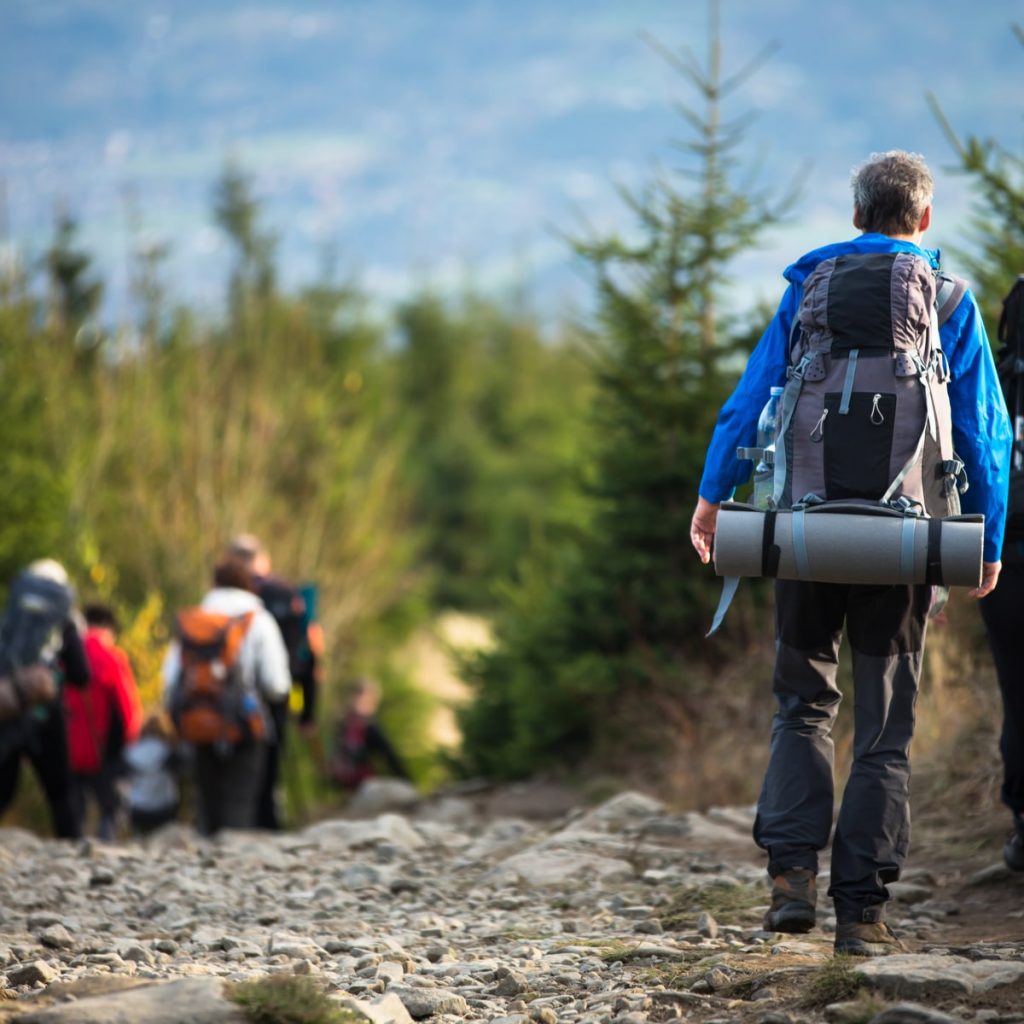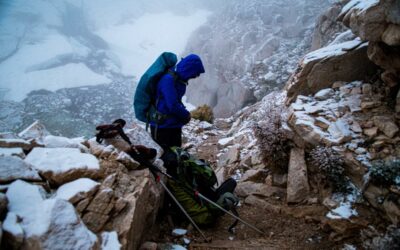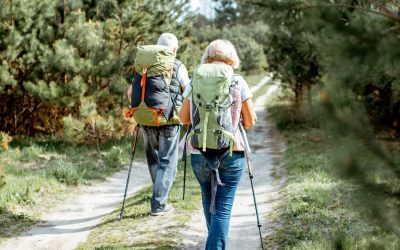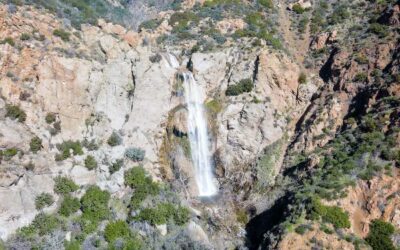We all want to lose weight, but going to the gym can easily become extremely repetitive. Sooner than later, the gym becomes more of a chore than a goal, and we quickly lose all motivation.
Overall, hiking is a great form of exercise that can help you lose weight. The inclined trails force your body to burn more calories than walking on flat ground and primarily target adipose tissue (fat). When combined with a proper diet, fat loss is accelerated.
Allow me to explain in further detail.
Can Hiking Help You Lose Weight?
When I was in college, I was a pre-med major. My goal was to be a general practitioner. However, for my undergrad I was studying Exercise Science in order to get my BS and then transfer to med school.
In the end I chose an alternative route, but many of the concepts I learned in those courses can be applied to this post. One specific topic I clearly recall was the effects of low intensity exercise, such as walking and hiking, on body fat.
As you can see in this study, individuals successfully reduced body fat levels by walking for 30 minutes on a daily basis for 12 weeks. If you can reduce body fat by simply walking, you can do it as well while hiking.
However, there’s a catch. You must combine hiking with an adequate amount of calories. Which I will explain in the next section.
How Does Hiking Help You Lose Weight
There’s a few terms you need to learn to understand how hiking can help you lose weight.
I will define the following terms according to Michael Matthews in his amazing book Bigger Leaner Stronger (which I personally use for strength training).
- Basal Metabolic Rate (BMR) simply means the number of calories your body burns when you’re completely idle. By idle I don’t mean lazy such as watching TV or playing video games. I mean literally as if your body was completely immobilized.
- The second term is Total Daily Energy Expenditure (TDEE). TDEE is defined as the amount of calories you burn from physical activity PLUS your BMR. Your TDEE will change on a daily basis depending on how intense of an exercise or work you performed.
- Caloric Deficit means your body is in a state in which you have consumed less calories than your TDEE. For example, if your TDEE is 3000 calories but you’ve only consumed 2800, your body is in a caloric deficit.
- Caloric Surplus is the complete opposite. If you have consumed more calories than your TDEE, you’re officially in a caloric surplus. For example, you consumed 3300 calories, but your TDEE is 3000.
In order to burn fat you must maintain your body in a caloric deficit on a daily basis. If you do, your body will target and burn adipose tissue (body fat) to provide you with sufficient energy to survive.
The opposite is also true, if you remain in a caloric surplus for extended periods of time, you will store the extra calories as fat and therefore gain weight.
Hiking increases your TDEE and thus, makes it much easier for you to remain in a caloric deficit.
I know that was a lot to take in in one section, but I promise I will make it easier for you. If you want to calculate your TDEE all you have to do is click on this link right here and it will take you to a calculator which will do all the work for you.
Once you’ve calculated your TDEE all you have to do is eat less calories, and here’s the best part, you don’t have to adhere to any strict diets! You don’t have to use the keto diet, or the zero carb diet, none of those fads.
You can eat WHATEVER you want and still lose weight as long as you remain in a caloric deficit everyday!
Michael suggest a calorie deficit of 25%. For example, if your TDEE is 3000 calories, your daily target would be 2250 calories. At 25% you can put a significant dent in your body fat levels without feeling like you’re starving.
Can You Lose Weight By Hiking Once a Week
I get this question quite frequently because most of us can only hike on the weekends. The short answer is yes, as long as you remain in a caloric deficit throughout the week.
Allow me to share a quick story about a friend whom I used to mountain bike with. This guy was roughly 30 years old at the time, and he used to ride circles around me.
In a day, I’d complete about 6 runs down the mountain at the Snow Summit bike park while he’d easily complete 10-12, but he was still overweight.
I wondered for so long why that was the case. Then it hit me. His stamina was amazing because he’d bike like a madman once a week, but he would eat excessively the rest of the week.
The same holds true for hiking only once a week. If you’re constantly in a caloric surplus, it doesn’t matter how intensely you exercise, especially if it’s only once a week.
Does Hiking Help You Lose Belly Fat

Yes, hiking will help you lose belly fat. Just keep in mind, hiking will not help you lose ONLY belly fat. That’s not how fat loss works.
When you begin to lose weight, your body will burn fat stored throughout your entire body. Unfortunately, you can’t burn only fat in your arms or legs and keep it in your butt (sorry ladies).
Depending on your genetic makeup, you will store body fat more easily in certain parts of your body. Some of us store more fat underneath our chin, others in their pecs, but generally speaking, belly fat, especially lower belly fat, is very stubborn and will require extra effort to burn.
But don’t give up. Maintain a caloric deficit and you will acquire the body you’ve always wanted.
How Much Weight Can I Lose While Hiking

This is such a difficult question to answer because everyone’s body is completely different, but I will do my very best to provide you with the most accurate response possible by once again referencing author and personal trainer Michael.
In his book he writes about a study at the University of Jyvaskyla. In this study two groups of sprinters were observed for 4 weeks. One group maintained a 12% calorie deficit while the second group maintained a 25% calorie deficit.
After 4 weeks, the first group lost very little fat and muscle. However, the second group lost on average 4 pounds.
If you maintain a 25% calorie deficit, add the calories you burn while hiking, and take into consideration the fact that you’ll easily burn more fat because you’re (probably) not a high level athlete, it’s safe to conclude that you can burn AT MINIMUM (not average) 4 pounds, but more like 4-6 pounds per month.
However, the more often you hike the more weight you’re likely to lose.
It may not seem like a lot. But multiply 5 x 12 months and you get a total weight loss of 60 pounds in one year. That’s a very radical transformation for any individual.
How Many Calories Are Burned While Hiking
Once again, this question does not have a universal answer, but we can get a pretty accurate understanding of how many calories a person burns based off of their total body weight.
I borrowed the following table from Healthline, which takes into consideration how many calories a person burns an hour according to their respective weight and the steepness of a trail.
| 1–5% grade | 6–15% grade | |
| 120 pounds (55 kg) | 292 | 440 |
| 150 pounds (68 kg) | 360 | 544 |
| 180 pounds (82 kg) | 435 | 656 |
| 210 pounds (95 kg) | 504 | 760 |
| 240 pounds (109 kg) | 578 | 872 |
| 270 pounds (123 kg) | 652 | 984 |
How To Accelerate Weight Loss While Hiking

If you want to increase the quantity of calories you burn when you go hiking, try the following tips.
- Add more weight to your backpack so as long as you don’t feel discomfort or back pain. Carrying more weight on the trail will require your body to produce more energy, and as we already know, more energy means more calories burned. If you’re planning a short hike and don’t need a backpack I highly suggest investing in a weighted vest. A weighted vest will distribute the weight more comfortably throughout your upper body but still force you to burn more calories.
- Choose steep trails to hike. I prefer hiking steep trails over adding more weight to my backpack for various reasons. First of all, steep trials get your heart pumping, which means you’re also improving your cardiovascular system. But if that’s not enough, adding more weight to your backpack can potentially cause unnecessary stress to your knees in the long run. If you can, choose steep trails over more weight.
- Hike faster! One way to increase the intensity of any exercise is to perform it faster. If you hike just a tad bit faster than your normal average speed, you’ll notice yourself breaking a sweat. That’s because you’re using more calories to move more quickly.
- The last tip I have for you if you want to burn more calories on your hikes is to simply choose longer hikes! The longer you’re out hiking, the more calories you’re going to burn.
I hope this post has helped you grasp a good understanding of the correlation between hiking and weight loss. If you have any questions, feel free to email me at [email protected]. I’ll get back to you ASAP!
Also, feel free to check out this other post I wrote regarding hiking and muscle building.
More Hiker’s Ed
This Gear For Winter/Snow Hikes Is Non-Negotiable
Although stunningly beautiful, venturing into the mountains after a snow storm can be extremely dangerous. Avalanches, getting lost, hypothermia, and frostbite all pose a real threat. Here in Southern California, multiple hikers go missing every year at Mt Baldy, a...
Top 12 Hiking Gifts 2024: For Men & Women
It's that special time of the year again! But don't worry, I got you covered with Christmas gift ideas for hikers of all ages. I'll start with the cheapest to the most expensive. Although I receive a small Amazon affiliate commission when you buy these products via...
10 Best Hiking Apps in 2024
One of the most crucial aspects of hiking is the planning. Hiking apps can help you check the weather, distance, elevation, parking information and so much more. However, as technology has progressed, hiking apps have become increasingly sophisticated to the point...
13 Crucial Hiking Tips to Consider for Seniors
Hiking is fantastic for physical and mental wellbeing, and it’s an activity any age group can enjoy. Seniors can get just as much satisfaction from hiking as younger people – it just takes a little more pre-planning. I’m here to help you along your hiking journey....
7 Tips for Staying Cozy and Dry While Hiking in the Rain
No matter how well you've planned a hike, the weather is one variable out of your control. But even so, you can still avoid getting drenched when the rain starts coming down while out on the trail. I’ve got lots of tips and tricks to share with you today on staying...
My Favorite 15 Hiking Songs For Your Outdoor Playlist
Hiking is a rhythmic activity. It’s about putting one foot forward and then the next and repeating the step again and again. To keep up this rhythmic pattern, hiking songs can be an excellent way. After all, music plays a pivotal role in all of my adventures. In...












